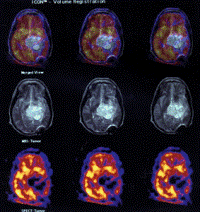The majority of medical radioisotopes used in the United States are produced using highly enriched uranium (HEU) reactors in Canada and Europe. Not surprisingly, this has led to serious tensions regarding the state of nuclear security and non-proliferation in the US. As a result, a report by the U.S. National Academies was mandated by the Congress to examine the feasibility of eliminating the use of HEU in reactor fuel, reactor targets, and medical isotope production facilities.
The medical isotope molybdenum-99 (Mo-99) has a decay product, technetium-99m that is used for medical diagnostic imaging procedures. Since there are currently no U.S. producers, they rely on five foreign facilities that are in need of maintenance and safety regulations. Malfunctions in these facilities are a great threat for patients that count on nuclear medicine for their care. In addition, the increasing demand for medical isotopes has led to a great deal of pressure in finding an alternative source for Mo-99.
Thomas J. Ruth, Senior Research Scientist at TRIUMF and Senior Scientist in Medical Biophysics at the BC Cancer Agency had the privilege of participating in the Committee assembled to explore the viability of solutions. His experience with radiotracers for the physical and biosciences, as well as his participation in a panel on the Status of Nuclear Medicine Research, provided him with the necessary expertise to work under such mandate. Accompanied by international medicine physicians, security experts, health economists, system/organizational experts and nuclear and reactor scientists, Ruth learned from organizations such as ANSTO in Australia, INVAP in Argentina, COVIDIEN in Netherlands, and MDS Nordion in Ontario, among others.
The report released by the U.S. National Academies states that eliminating the highly enriched uranium used in the process, which is the main source of medical isotopes in the US, would be technically and economically feasible. It explains that in the long run there is potential for HEU to be replaced by low enriched uranium for large scale production of Mo-99. In terms of finding an alternative, Ruth says, “At this point there are none. However, based on the workshop (Task Force on Alternatives for Medical-Isotope Production) held at TRIUMF in the fall of 2008, the use of an electron linear accelerator used to generate intense photon beams could result in the production of Mo-99 from natural uranium (U-238).” This could mean a major breakthrough for nuclear medicine and would eliminate the security issues of transporting, storing and disposing HEU.
Ruth described his experience as a member of the Committee as both exciting and humbling. “The excitement was based on the fact that we were performing a study that could have a major impact on the use of highly enriched uranium. The feeling of humility came from working with so many experts in the nuclear field, a number of whom had been associated with the Manhattan project and the subsequent research in reactors and nuclear weapons control.” TRIUMF feels proud to have been represented by Ruth and is optimistic about the possibilities a Photo-Fission Accelerator for Mo-99 could bring to the field of medicine.
Banner photo : U.S. National Academies
Embedded photo : Upper row: fused image of nuclear medicine acquisition and magnetic resonance (MR) acquisition. Middle row : MR study yields excellent anatomic detail (spatial resolution.) Bottom row: nuclear medicine (SPECT) images yield excellent functional information.
Maria Jose Crousillat
TRIUMF's Communications Assistant

Eliminating Highly Enriched Uranium from Medical Isotopes
